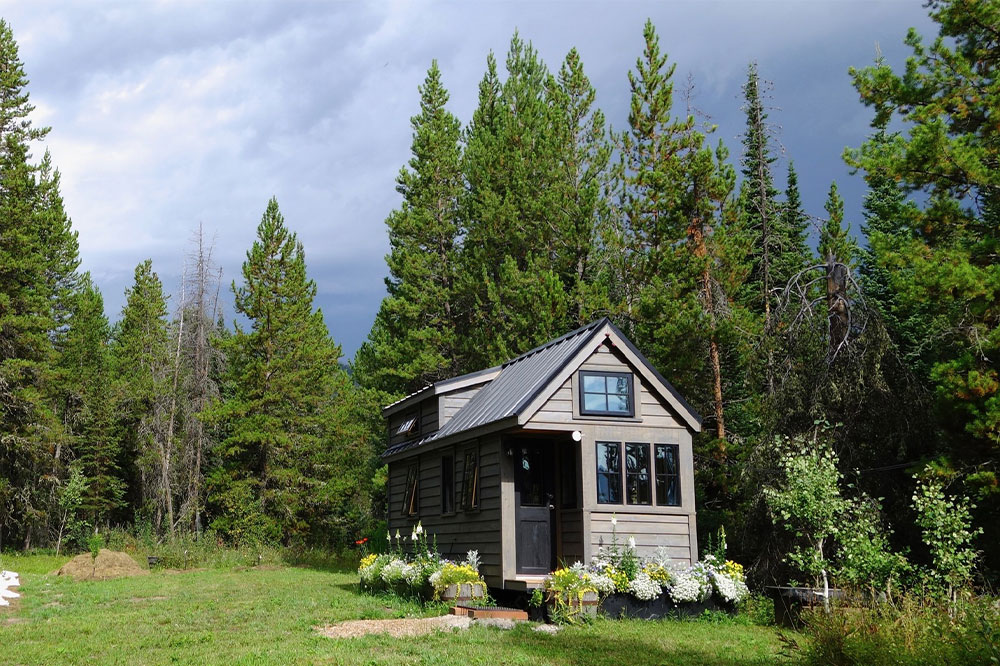Know about the Tiny House Movement in the Country
Tiny houses are a part of a lifestyle choice of downsizing and living a simple yet fun life. This is a social movement gaining popularity across America, especially after the real estate crash that affected the country in 2008. Small or even tiny is the new mantra in housing.
What are tiny houses?
Tiny houses are tiny dwellings, ranging from 70 to 500 sq/ft total living space. The tiny house movement is sweeping across the country and has gained a lot of converts because of the simplicity and economical factor involved.
There are tiny house associations, websites, and TV shows that showcase and popularize this kind of lifestyle.

Why the move towards tiny houses?
The average size of houses in the country has grown to be around 2600 sq/ft. The cost to build such a house can be more than $270,000. This is without the mortgage interest. Including the mortgage and interest, the cost can go up to $481,000. Paying off this debt involves years of commitment and is a huge strain on the finances of a large majority of Americans.
The average size of tiny houses is around 180 sq/ft. The cost to build such a house, if self-built, is around $23,000. Most tiny house owners are debt free and also have more in savings for the future. And tiny houses are not just for the lower income group and those with poor educational qualifications. A majority of tiny house owners have a masters degree and earn a good income. More women than men are choosing this tiny house lifestyle.
Advantages of tiny houses
Low cost
Most tiny houses are designed and built by the owner, with the professional help of electricians and plumbers, keeping the cost down to an average of $23,000. This small investment enables the owners to be debt free and able to save more of their income for the future.
Low maintenance and less impact on the environment
Because the dwellings are so small, utility costs and maintenance costs are low. Many tiny houses have solar panels installed to generate their own electricity.
Tiny houses utilize less space and energy than large homes. Solar energy usage in most of these dwellings translates into an even smaller environmental footprint.
Simple lifestyle
While the sizes of conventional houses have been increasing, the average size of the American family has been decreasing. So, the craze for larger homes is driven more by fashion, materialism, and luxury rather than by need. Large houses also need more furniture and furnishings.
Tiny houses fill the needs of the owners and have less clutter. Just a few small bits of furniture and other essential needs can be sufficient.
Mobile homes
Many tiny houses are built on wheels. This means the owners are not tied down to a location. They can hitch up their home to their car or van and move across the country.
What are small houses?
The tiny house movement recognizes two categories of dwellings. Those that are 70 to 500 sq/ft qualify as tiny houses. Houses that are more than 500 sq/ft but less than 1000 sq/ft are categorized as small houses. These can be ideal compact houses for families with children.
Are tiny houses ideal for everyone?
Tiny houses can be ideal for those who believe in a simple lifestyle and just enough living space to accommodate their few possessions. However, they may not be a good choice for most people who would prefer more living space for various reasons, not just luxury.
Also, tiny houses can’t be put up anywhere. Zoning laws and housing laws can make tiny houses illegal in most places. So, tiny house owners are left with few choices when it comes to locating their homes.
While tiny houses are still growing in popularity, most enthusiasts do not want to compromise on the locality. They want to put up their tiny houses in prime regions in the cities. There are only a few such regions, and so the land cost is rising for tiny houses. Those who are able to lease land from friends or family are the lucky ones.
While tiny houses can be a conscious choice for some, most who live in such dwelling do so because of financial constraints and not by choice. Many tiny house residents point to drawbacks in these residences:
Cramped space, and less privacy for family members, especially those who have children. If you have pets, it is not practical or hygienic to live in a 150 sq/ft space with two large dogs and three cats.
Floor rugs and carpets get frayed and threadbare quickly though frequent foot traffic. Furniture also tends to wear down faster, springs and upholstery taking a beating because mostly there are only one or two sets around the house.
Strong smell can linger for longer and cling to clothing and other items, and you take them with you wherever you go.
Tiny houses can be a good choice for singles, a couple, or retired people. They can be a good solution for those who want to own their homes but not get into debt. However, the size of the house also depends on the number of residents and on personal preferences in minimal living space and privacy.

